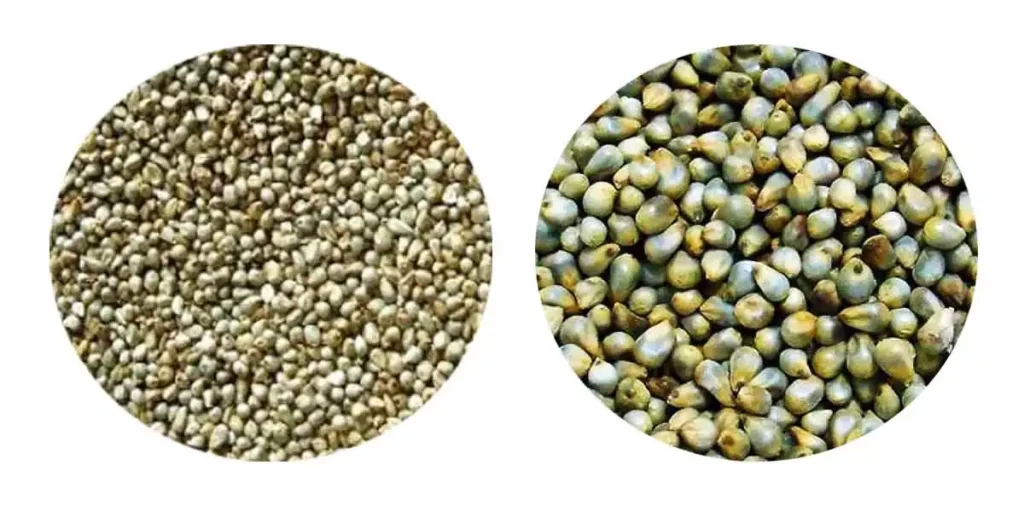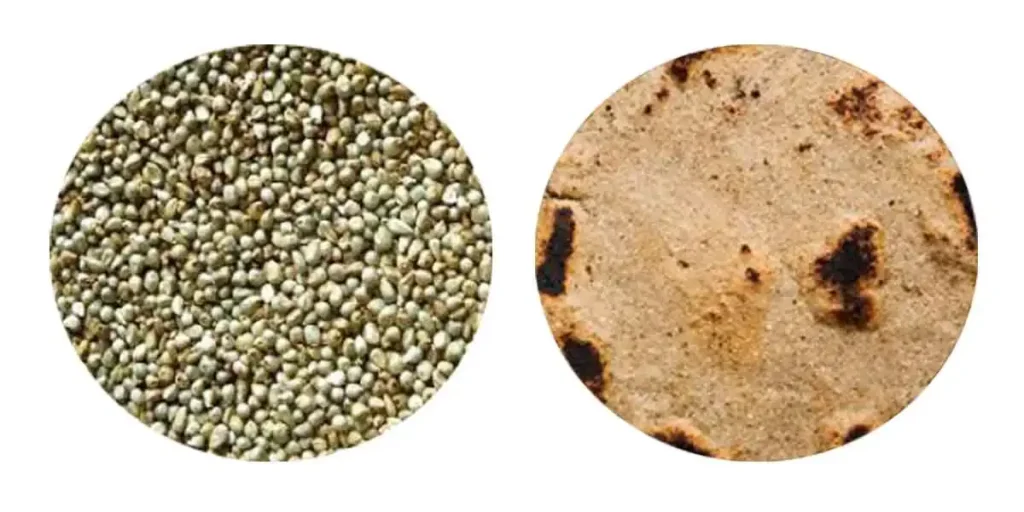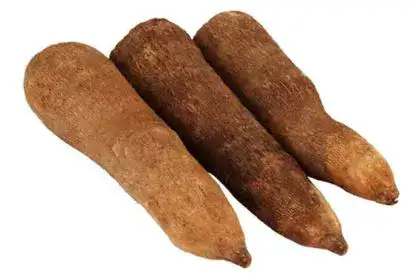Millet belongs to the grass family. Generally, it is an annual, small-grained, and warm-weather cereal. Like other important cereals, millets also have a similar content of nutrition. They have a high tolerance capacity for extreme weather and drought.
These grains or cereal crops come under a highly varied small-seeded grass group. These are widely grown all over the world. Millet is used for human food and fodder. Some millet refers to various taxa, but most belong to the Paniceae tribe.

Millet is popular as an important crop in the semi-arid tropics of Africa and Asia, especially in Niger, South India, Nigeria, and Mali. These developing countries produce 97% of millet. The cause of this crop’s popularity is its short growing period under high temperatures and dry conditions and high productivity.
The below article is all about millets, including – millets in Malayalam, their health benefits, cost, types, popularity, availability, the nutritional value of millet, popular recipes, and many more.
| English name | Millet |
| Malayalam name | Panji Pullu, Koovaragu, Thina, Chama, Kavadapullu, Kambam, Cholam ( according to the types ). |
| Kingdom | Plantae |
| Family | Poaceae |
| Genus | Cenchrus |
| Order | Poales |
| Subfamily | Panicoideae |
Millets in Malayalam name
According to different types of millet there are different Malayalam names for millet. Those are –
| English names | Malayalam names |
|---|---|
| Sorghum millet | Cholam |
| Pearl millet | Kambam |
| Barnyard millet | Kavadapullu |
| Little millet | Chama |
| Foxtail millet | Thina |
| Kodo millet | Koovaragu |
| Finger millet | Panji pullu |
The city area people of Malayalam-speaking areas ( Kerala, Lakshadweep, Tamil Nadu, or Puducherry ) can understand the name millet. Still, people can not recognize the English name if you are in a rural area.
You should use the local name for different millet types like – Panji Pullu, Koovaragu, Thina, Chama, Kavadapullu, Kambam, and Cholam for better communication. The restaurants and hotels of the city area have many millet recipes on their menu, which you can enjoy. Foxtail millet in Malayalam is known as Thina.
Some Products of millet
Click here to Check Some products of millets on amazon.
Health benefits of millets
As a rich source of plant compounds and nutrients, millet offers many health benefits. Some of them are –
1. Millets are rich in antioxidants
Catechins and ferulic acid are examples of phenolic compounds. Millets are high in these compounds. Phenolic compounds work as antioxidants and help in protecting your body from oxidative stress, which is harmful.
According to some experiments on mice, ferulic acid helps protect the skin, heal wounds rapidly, and has anti-inflammatory properties. Catechins help to cure metal poisoning by binding themselves to heavy metals in the bloodstream.
Dark-coloured millets like foxtail, proso, and finger millets have more antioxidants than their yellow or white counterparts.
2. Millets are high in niacin
As a great source of niacin, millet helps the human body to manage above 400 enzyme reactions. The niacin content in millet is necessary for good organ functions and healthy skin. You can add this important compound to processed foods to make them richer.
The darker varieties of millet are an amazing source of beta-carotene. The dark pigment is natural, and it works as a precursor to vitamin A and an antioxidant that helps your body support eye health and fight against free radicals.
3. Millets help to control blood sugar
The content of complex carbohydrates and simple carbohydrates in millet is high and low simultaneously. This factor makes millet a low GI ( glycemic index ) food. So compared to standard wheat flour, millet takes more time to digest.
4. Millets help improve digestive health
As you know, millets have a high content of insoluble and soluble fibres. The insoluble fibre content of millet is called prebiotic.
According to its name, it helps to boost your digestive system by supporting good bacteria. Insoluble fibre also helps to add bulk to stools. This process helps to reduce colon cancer risks and keeps you regular.
5. Millets help to keep your heart healthy
Millet has soluble fibre content. It helps to decrease the quantity of bad cholesterol that is present in your blood. If bad cholesterol stores in your blood, it leads to atherosclerosis. Soluble fibre can absorb the cholesterol in your stomach by turning it into a gel. And the gel safely carries out from your body.
According to some studies, millet helps to increase the level of good cholesterol and decrease the level of triglycerides in your body. Bad Cholesterol is very dangerous for heart health.
So if you consume millet according to the dietician or doctor’s prescription, it has a good impact on heart health and keeps your heart healthier.
6. Millets are known as gluten-free diets
If you suffer from non-celiac gluten sensitivity or celiac diseases, you can have millets. You can get protein, healthy carbs, and fibre from a millet diet. Amarnath and sorghum millets are naturally gluten-free.
To prepare baked goods, you can take ground millet and mix it with other gluten-free flour or wheat and make bread.
7. Millets help cure chronic diseases
Millet is a cereal grain with phenolic compounds and antioxidant properties. Oxidative stress can be cured with the help of antioxidants and reduced free radicals. According to a study, most millet varieties have antioxidants, but some are extremely high in antioxidants, like pearl, proso, foxtail, kodo, and finger millet.
Oxidative stress is the first cause of chronic diseases like Alzheimer’s, cancer, diabetes, Parkinson’s disease, cardiovascular issues, and some eye diseases. Millet can prevent all health issues.
Side-effects of millet
There are no such proven theories about the serious side effects of millet till now. But according to some research, always take advice from your dietician or doctor before adding millet to your regular diet.
You may face some allergies or digestive problems because of consuming millet if it doesn’t suit your body. You should always be aware of the quantity and hygiene.
Some side effects of millet are –
- Digestive system disturbance
- Bloating
- Constipation
- Diarrhoea
7 Types of millets
There are different types of millet you can see worldwide. But from this article, you can learn about seven millet types. Those are –
1. Sorghum millet
This type of millet is popular as jowar in India. It is widely produced in Karnataka and Maharashtra. Sorghum millet is also cultivated in Central America, Africa, and South Asia. Various countries use this variety of millet for ethanol production and as fodder. This grain is especially used in cakes and flatbread baking.
You can also grind this millet variety for porridge meal preparation or make a millet syrup and use it as a sweetener. Sorghum millet is very popular as – the world’s 5th most important cereal crop.
2. Pearl millet
According to research, it is one of the ancient grains that has been produced in Asia and Africa since prehistoric times. You can still find this variety in Africa ( Sahel region ). It is believed that pearl millet has been domesticated in the Sahel region.
In India, this millet variety is boiled to prepare Kamban Koozh and Kamban Choru, which are Tamil porridges, and you can also make a flatbread named Bhakri. The people in Nambia ferment pearl millet and prepare a special drink known as Oshikundu or Ontaku. Pearl millet in Malayalam is known as Kambam.
3. Foxtail millet
Known as Italian millet. Foxtail millet is widely produced in Asia and is popular as the second most grown millet variety. This millet contains vitamins A, E, fibre, potassium, and phosphorus.
Generally, this millet variety is used to prepare cakes and flatbreads. Foxtail millet is used to prepare lemon rice in South India. South Indian people also prepare foxtail millet Kheer, a well-known dessert in India, using this millet variety.
4. Finger millet
This millet variety is generally grown in Asia and Africa. The best weather for this hardy crop is semi-aired and well in arid regions. You can use finger millet to prepare porridges, puddings, cakes, and loaves of bread.
The millet stalks are stored for fodder, and the finger millet flour is set to ferment and prepare beer in Nepal. Ragi is the popular name for this millet variety in India. The flour of this millet is mixed with boiled water, yoghurt, or milk. You can consume it directly or make thin-leavened dosa, flatbreads, or thicker unleavened roti. Finger millet in Malayalam is known as Panji Pullu.
5. Little millet
You can find this variety in the temperate climates of India, China, the Caucasus, and Asia. Little millet can grow well, particularly in low-rainfall areas. You can serve it both as dinner and breakfast on the subcontinent. In India, little millet is prepared like couscous and served as a breakfast dish called Upma, in which vegetables are also used.
6. Kodo millet
The origin of this millet variety is West Africa. But nowadays, it is grown in India, Vietnam, Nepal, Indonesia, and the Philippines. Kodo millets are used as a substitute for rice, prepared as a Pilaf or Palau in India.
You can also make pudding and Kheer by using this millet variety. Kodo is a versatile millet. You can cook many dishes like dosa, idli, snacks, noodles, porridge, and khichdi by using grounded kodo flour. Kodo millet in Malayalam is known as Koovaragu.
7. Barnyard millet
This millet variety is a great source of carbs, protein, and fibre. Barnyard millets are white-shaped and small seeds. They are naturally grown in Uttarakhand, India. Compared to other cereal grains, this millet variety has more nutritional value.
You can provide Barnyard millet to kids at the age of 6 months. You can make Kheer or gruel and give it to the small babies. Because of its rice-like taste, it is also popular as Sanwa rice after boiling. Barnyard millet is beneficial for numerous health problems and is a natural blessing to daily inactivity and meal.
Nutritional value of millets
Like many cereals, millets are rich in carbs because they are known as starchy grains. It is proven that millets are high in various minerals and vitamins. You can get more vital amino acids from millet than most cereals. These compounds work as building blocks for protein.
Compared to all cereal grains, finger millets have the highest calcium content. A single cup or 100 grams of cooked finger millet provides 13% of the daily value of calcium. Calcium helps ensure the proper work of muscular contraction, bone health, nerve function, and blood vessels.
174 grams or one cup of cooked millet can provide the nutritional value –
Calories – 207 kcal
Fiber – 2.2 grams
Carbs – 41 grams
Fat – 1.7 grams
Protein – 6 grams
Iron – 6% of the DV ( daily value )
Folate – 8% of the DV
Magnesium – 19% of the DV
Phosphorus – 25% of the DV
You can get the nutritional value of millet form 50 grams of millet are –
| Nutrients | Amount | % of DV |
|---|---|---|
| Calories | 189 kcal | – |
| Protein | 6 grams | 12% |
| Trans fat | 0 grams | – |
| Saturated fat | 0 grams | – |
| Total fat | 2 grams | 3% |
| Cholesterol | 0 mg | – |
| Sodium | 3 mg | 0% |
| Sugar | 1 gram | – |
| Dietary fiber | 4 grams | 14% |
| Total carbohydrates | 36 grams | 13% |
Cost of millets in Malayalam areas
The cost of millet varies depending on the type, quality, brand, and place of buying ( online, offline stores, or local market ). According to the latest market cost in 2023, Rs 20 to Rs 100 is the cost of 1k millet in India.
Compared to dried millet, natural millet is costly. The minimum amount of dried and natural millet is Rs 22 and Rs 24 per kg, respectively. But the maximum cost of dried and natural millet is Rs 80 and 280 per kg, respectively.
According to a survey, the average cost of one quintal millet is around Rs 3400 in India. Because of the huge production, the cost of millet in India is very lower.
Availability and popularity of millets in Malayalam area ( Kerala, Lakshadweep, Tamil Nadu, or Puducherry )
India is the highest supplier and producer of millet. Many states of India produce millet. The major millet producer states are Maharashtra, Andhra Pradesh, Rajasthan, Madhya Pradesh, and Karnataka.
All the above states produce large quantities of millet varieties for international and domestic markets. Besides the major millet-producer states, there are also much smaller millet-producer states like – Bihar, Uttar Pradesh, and Madhya Pradesh.
India faces no millet deficiency because of the huge production, and the availability of millet in India is insane. The highest millet producer states supply millets in Malayalam-telling area like – Kerala, Lakshadweep, Tamil Nadu, or Puducherry.
Because of the less cost, so many health benefits, easy use factor and high cultivation, millet has gained popularity in India rapidly. It is a great alternative to other cereals like rice and wheat, which are more expensive. Millet contains high vitamins, minerals, fibres, and protein.
Recipes of millets in Malayalam areas
You can buy millets asdried, grounded or powdered, and puffed ( just like rice ). Generally, you can buy millet from any health food stores and supermarkets. You can cook dried millet like quinoa or couscous.
Grounded millet can substitute wheat flour in many baked goods. You can consume puffed millet as a great substitute for puffed rice or a healthy snack.

Some popular millet recipes are – little millet upma, millet stir fry with vegetables, lemon millet Khichdi, millet cakes with carrot and spinach, spinach and millet Pulav, millet idli, millet porridge, millet Kheer, foxtail millet biryani, etc.
Final verdict
The crop millet has various advantages compared to other crops. It is pest and drought resistant. The crop can survive in less fertile soil and harsh environments because of its physical structure ( hardness and small size ) and genetic composition. This ancient crop offers many health benefits at low cost and easy availability.
The article is all about millet-like – millets in Malayalam, their cost, types, popularity, availability, nutritional value, popular recipes, health benefits of millet, and many more.
Frequently asked questions
1. Describe foxtail millet.
Foxtail millet is also known as Italian millet. Foxtail millet is widely produced in Asia and is popular as the second most grown millet variety. This millet contains vitamins A, E, fibre, potassium, and phosphorus.
Generally, this millet variety is used to prepare cakes and flatbreads. Foxtail millet is used to prepare lemon rice in South India. South Indian people also prepare foxtail millet Khir, a dessert, using this millet variety.
2. What are the Malayalam names of different millets?
According to different types of millet there are different Malayalam names for millet. Those are –
English names —— Malayalam names
Sorghum millet———-Cholam
Pearl millet—————–Kambam
Barnyard millet———–Kavadapullu
Little millet—————–Chama
Foxtail millet—————Thina
Kodo millet——————Koovaragu
Finger millet—————–Panji pullu
3. What are the different types of millet varieties?
Poaceae is the name of the family for all millet varieties. But each variety has different species, appearance, and colour. You can divide the millet varieties into two categories – small and large millet. Some examples are –
A] Small millets –
1. Kodo millet
2. Little millet
3. Browntop millet
4. Barnyard millet
5. Fonio millet
6. Guinea millet
B] Large millets –
1. Foxtail millet
2. Pearl millet
3. Finger millet
4. Proso millet
The most widely cultivated millet variety is pearl millet for human consumption. But all millet varieties are well known for t
4. How does millet help to keep your heart healthy?
Millet has soluble fibre content. It helps to decrease the quantity of bad cholesterol that is present in your blood. If bad cholesterol stores in your blood, it leads to atherosclerosis. Soluble fibre can absorb the cholesterol in your stomach by turning it into a gel. And the gel safely carries out from your body.
According to some studies, millet helps to increase the level of good cholesterol and decrease the level of triglycerides in your body. Bad Cholesterol is very dangerous for heart health. So if you consume millet according to the dietician or doctor’s prescription, it has a good impact on heart health and keeps your heart healthier.
5. What are the health benefits of millet?
1. Millets are rich in antioxidants
2. Millets are high in niacin, so it keeps your skin healthy
3. Millets help to control blood sugar
4. Millets help to improve digestive health
5. Millets help to keep your heart healthy
6. What are the famous recipes you can prepare by using millet?
Some popular millet recipes are – little millet upma, millet stir fry with vegetables, lemon millet Khichdi, millet cakes with carrot and spinach, spinach and millet Pulav, millet idli, millet porridge, millet Kheer, foxtail millet biryani, etc.

